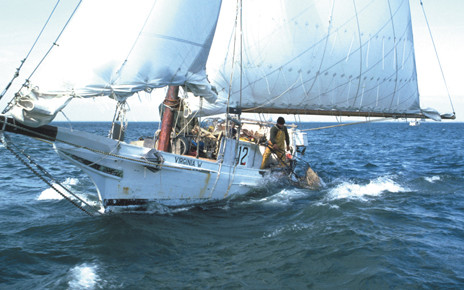An early assessment by the Monterey Bay Aquarium Seafood Watch program downgraded Eastern oysters harvested in Chesapeake Bay to the category of “avoid." But now Seafood Watch says it is still reviewing the report after criticism from scientists, state agencies and watermen.
The draft report in spring 2023 rated wild-caught Chesapeake oysters, harvested with hand gear and towed dredges, as a seafood to “avoid” citing “high concern” for the status of the stock and management of the fishery.
News of the draft report in May – a downgrade from previous Seafood Watch reports that looked favorably on Eastern oysters – was widely criticized by Chespeake Bay scientists and environmental groups, from the Chesapeake Bay Foundation to the Virginia Institute of Marine Sciences. In their critiques, objectors said Seafood Watch had used old data and flawed interpretation to reach its conclusion.
Still, the Seafood Watch draft report had attracted news media attention in June, and left some watermen worried about consumer perceptions as the Maryland season opened Oct. 2.
But at the end of September Seafood Watch had not yet published a final rating for Eastern oysters. In a Sept. 21 email reply to questions from National Fisherman, Seafood Watch’s media team said the group is still considering comments from the Maryland Department of Natural Resources and other experts:
“The draft assessment of the Eastern oyster fishery in Maryland (as well as the other Atlantic states) is still under review by Seafood Watch and has not been published. Seafood Watch received significant feedback on these draft assessments during the open comment period (please see Open Period Complete), including from Maryland DNR, and is working to resolve several technical questions with state agencies and other experts.
“Current Seafood Watch recommendations for wild Maryland oysters can be found here, and farmed oysters here.”
In a May 19 letter to David Hernandez, a fisheries scientist with Seafood Watch, officials with Maryland DNR and state Department of Agriculture presented their case.
They wrote how the “2018 Seafood Watch assessment labeled Maryland’s eastern oyster as a ‘Good Alternative’ and since that evaluation Maryland has continued to advance productive and effective management efforts to further establish a sustainable, local oyster fishery.
“The current Seafood Watch draft report labels Maryland’s eastern oyster as ‘Avoid’ which is concerning particularly given the advances to management that have occurred since the last assessment.”
In a lengthy list of recommendations, Maryland officials advised Seafood Watch on the mistakes they saw in the assessment. Near the top was a call to separate “aquaculture (farmed) oysters and the public commercial fishery in the assessment.”
“Aquaculture is based on privately owned oysters, but the public fishery is based on the natural oyster population (i.e. a public resource) within a detailed management framework,” the DNR commentary noted. “By not explicitly stating that Maryland has an aquaculture industry and how the aquaculture status will be addressed and assessed, it will lead readers to believe that all oysters harvested in Maryland are from the public fishery and buyers should therefore ‘avoid’ purchasing any and all oysters in the state.
“DNR tracks harvest separately for these two practices and these practices are managed very differently. Therefore it is important for Seafood Watch to address aquaculture and the public commercial fishery practices separately.”
For the wild oyster fishery, state officials made four main points:
- “Maryland’s oyster stock assessment was reviewed by an independent panel of stock assessment experts recommended by the NOAA’s Northeast Fisheries Science Center. The panel deemed the approach to be innovative and appropriate for management decisions;
- “The scientifically rigorous annual monitoring of the oyster population undertaken in Maryland;
- ”Recent improving trends in Maryland’s oyster population and habitat;
- “The ongoing and successful large scale oyster restoration efforts within the State.”
“Maryland’s oysters are now the most regulated and restricted in the state’s history of managing this resource. Maryland has a comprehensive restoration program with benchmarks delineating success, a public fishery that can be adaptively managed based on science to encourage population growth and guard against the further erosion of abundance and habitat on public bars, and an extensive and growing aquaculture industry that leverages private funds to build habitat and oyster populations for ecological services to the Bay.”
Officials with Maryland DNR declined to comment beyond their earlier formal response to Seafood Watch.







